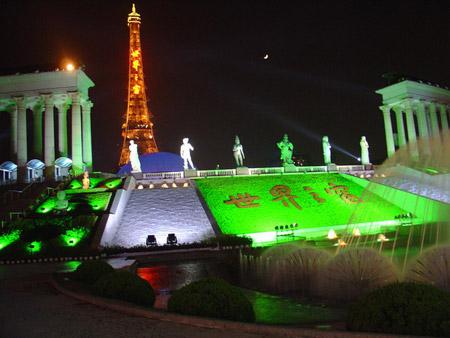Shenzhen local features
2009-12-14 14:25 BJT
Geographically speaking, Shenzhen is a 'buffer zone' between socialism and capitalism in China. This was one of the first Chinese cities to open its doors to the West in 1980 and is a model of what can be achieved with massive amounts of capital in a short space of time. It seems hard to imagine it now, but Shenzhen in 1979 was a small and undeveloped town.
 |
| Geographically speaking, Shenzhen is a 'buffer zone' between socialism and capitalism in China. |
In 1980, the government awarded the area the status of Special Economic Zone and millions of pounds was invested in the city.
A stock market was established and office blocks and factories shot up at an unbelievable rate. Today, the city is vibrant but somehow lacks soul.
Shenzhen has its own unique political, economic and cultural norms and customs that differ from the rest of China. The Shenzhen municipal government exercises a relatively self-governed legislation and the incentives for investors are high.
Although the organizational structure is consistent with national style, operation practice and management are different. In line with the basic laws of China, Shenzhen enjoys the autonomy of handling its own foreign affairs, public security, personnel, financial, industrial and commercial issues.
Without the burden of history, the theory is that Shenzhen will be able to seize the day and the future too. In practice, what Shenzhen has done for China is to encourage Chinese people elsewhere to consider the advantages and downsides of capitalism at work in their country.
Editor: Yang Jie | Source:
 Mail
Mail Share
Share Print
Print


 Video
Video









 2009 China Central Television. All Rights Reserved
2009 China Central Television. All Rights Reserved